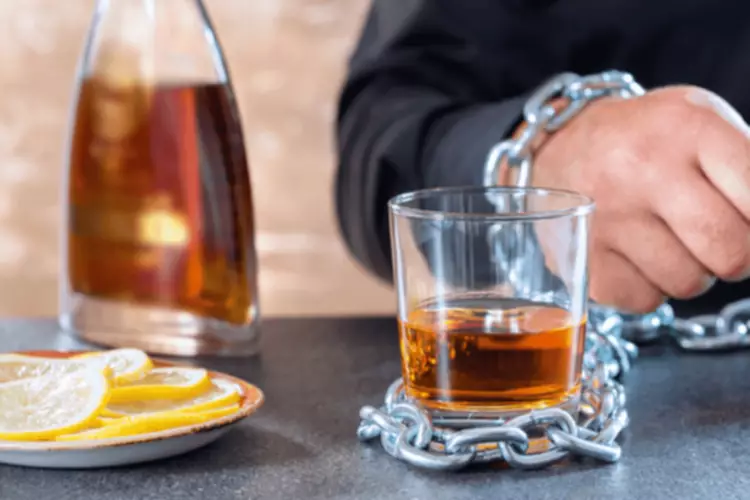
The side effect is temporary, but over time, heavy drinking can lead to permanent muscle degeneration that leaves the legs and arms weak and painful. You might be able to prevent liver disease from progressing to cirrhosis by intervening earlier in the process. This depends on whether you’re aware of it and whether there are steps you can take to prevent it. Many people don’t have symptoms in the early stages, but a routine health checkup could help bring it to light. This could give you the chance to make important changes or begin treatment.
Alcoholism Related Skin Disorders
This means that even minor injuries can result in more noticeable bruises. Sober living house Additionally, alcohol may weaken blood vessels, making them more prone to rupture. Any kind of disease or condition that harms the liver can lead to cirrhosis over time. About 2% of American adults have liver disease, and therefore are at risk of developing cirrhosis. However, those who drink too much alcohol, those who are overweight and those with viral hepatitis are at a greater risk. A wide range of other conditions and diseases can cause cirrhosis as well.
- Furthermore, alcohol addiction can have severe physical and mental health consequences.
- In younger individuals, skin is generally more resilient, and capillaries are less likely to break with minor trauma.
- Being more conscious about potential hazards and more cautious in your movements can help reduce the chance of injury after drinking.
- A reduced number of platelets means your body is less equipped to handle injuries effectively, leading to more pronounced bruising from minor traumas.
Dangers of Ignoring Easy Bruising Signs
If you’re not consciously keeping track of the drinks you’ve chugged, it’s easy to go over these limits. Articles having medical content shall serve exclusively for the purpose of general information. Such articles are not suitable for any (self-) diagnosis and treatment of individual illnesses and medical indications. In particular, they cannot substitute for the examination, advice, or treatment by a licensed physician or pharmacist.
- An alcohol use disorder is a legitimate medical condition that causes lasting changes in the brain.
- Before consuming alcohol while taking medication, always consult with a healthcare professional.
- The provider can counsel you about how much alcohol is safe for you.
- If you’re concerned about alcohol abuse, we offer personal treatment programs at Ohio Recovery in Cincinnati, OH.
Call today to speak confidentially with a recovery expert or take our brief self-test.
Cirrhosis is usually a result of liver damage from conditions such as hepatitis B or C, or chronic alcohol use. But if caught early enough and depending on the cause, there is a chance of slowing it with treatment. And even in the most severe cases, liver transplants and new treatments provide those suffering from cirrhosis with hope. Chronic alcohol use damages the liver, reducing its ability to produce clotting proteins. This impairment makes individuals more susceptible to bruises from minor trauma. Alcohol affects blood clotting by inhibiting platelet function, which is essential for stopping bleeding.
When small blood vessels break, blood leaks into surrounding tissues, creating a bruise. Alcohol consumption is often overlooked as a factor in increased bruising. Vitamin K is alcohol and bruising crucial for synthesizing proteins required for blood coagulation.
The persistent redness may also be accompanied by a sensation of warmth or burning, adding to the physical discomfort. If you notice frequent bruising on your legs after drinking, it is advisable to consult a healthcare professional. They can evaluate your overall health and determine if your alcohol consumption or any underlying conditions may be contributing factors.

- They may recommend some at home solutions to help prevent easy bruising as well.
- This neglect can further contribute to the deterioration of their physical well-being.
- They can help you determine whether you have a problem and what to do next.
- Understanding how alcoholism contributes to this condition requires a closer look at its physiological impacts.
The condition, which is sometimes called wet brain, is characterized by eye movement disorders, loss of muscle coordination, confusion and memory issues. There are many facial signs of alcoholism, but one of the most common signs is redness in your face. By this stage, their drinking is taking an obvious physical toll as well. Stopping is impossible at this point without professional help because of the severe and potentially life-threatening withdrawal symptoms that would occur if they quit cold turkey.


They will educate you on ABC Medication, breathing technique and nutrition. I was not sure about it first but I went ahead and started the treatment from them anyways and so far it’s been a dream. The bruises may also appear in unusual patterns or locations, such as on the trunk or back, where major impacts are less likely. In other words, bruising alone isn’t enough to diagnose alcoholism, but it can be a sign. When that happens, the person is seemingly functional and appears normal to other people.
Dietary Changes: Incorporating foods rich in vitamins K, C, B vitamins, and zinc can help restore nutrient levels.
This condition increases their risk of easy bruising as their bodies struggle to form clots effectively. Bruising occurs when small blood vessels break, causing blood to leak into the surrounding tissues. This can happen due to trauma or injury, but alcohol can also play a significant role in increasing the likelihood of bruising. Understanding how alcohol affects the body is essential for recognizing why some individuals may experience more frequent or severe bruises after consuming alcohol. Often, cirrhosis shows no signs or symptoms until liver damage is extensive. If you notice any of these symptoms, you should speak to your doctor.

Medical help should be sought if there is excessive or unexplained bruising, especially in those with a history of heavy drinking. Signs warranting attention include large painful bruises or persistent bruising without clear cause. Accompanying symptoms such as fatigue or weakness may indicate underlying health issues linked to alcohol use disorder.

